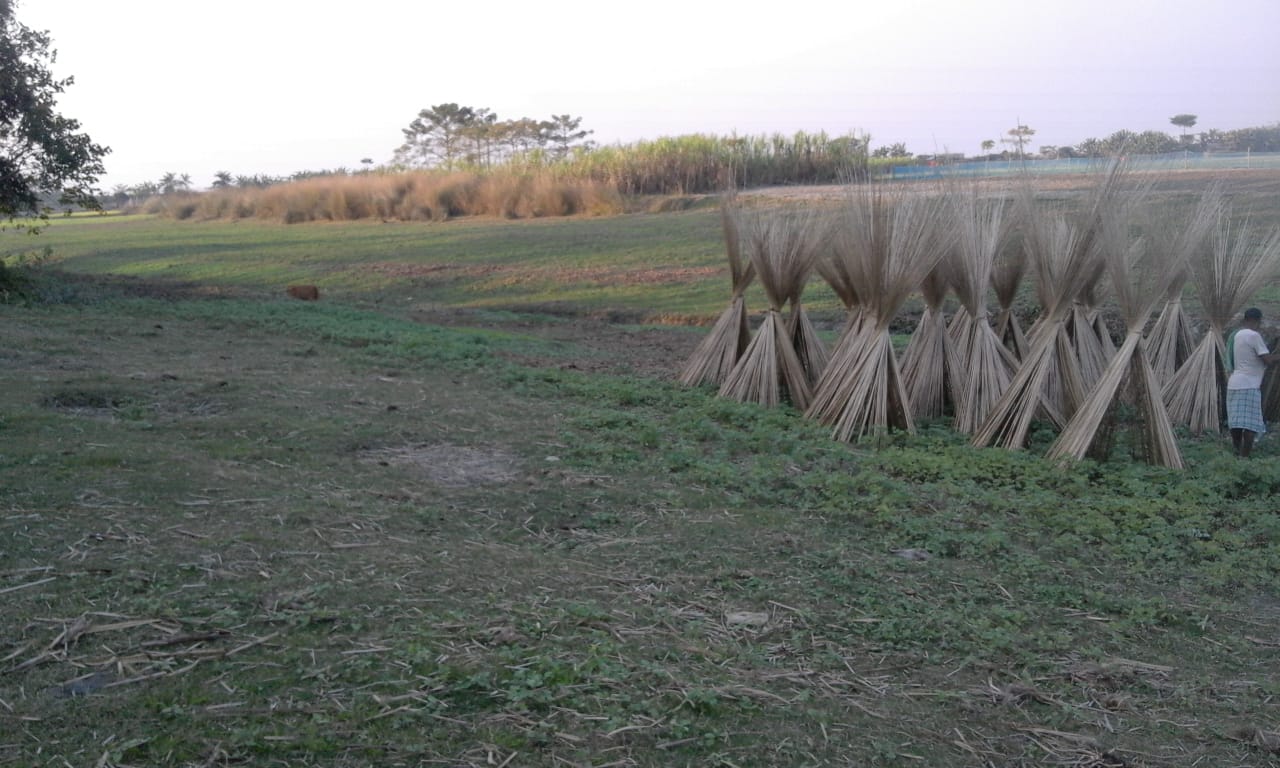It was just around the Bongo-Bhong of 1905 (The division of Bengal Presidency), the Partition of Bengal, that a large population of Namasudra, Kaibarta, and Jalo communities whose main source of living was cultivation, fishing, and boatmanship, migrated to certain places of Assam – mostly to the lower parts of the state. The British government of that period wanted labourers to maintain the tea plantations in Assam, and thus brought in workers from different parts of India, mainly from Chota Nagpur region.
This also resulted in an inflow of agricultural based labourers into the region, among them the marginalised community of Bengal, like Namasudras who were living under Bengali Zamindari system ridden with scarcity of resources and poverty.
Mainly the wetlands, the mushy lands of the Brahmaputra riverine which were considered as wasteland are given to these communities who were struggling for livelihood. This also resulted in extracting land revenue by the British government. For the agricultural labour, the fertile land of Assam was becoming home, in the search of a better life, and dignity ridden from the caste system in the undivided Bengal.
The understanding that Bengali community as a homogenised group played and acted upon Assamese society, leads to further inequality in socio-economic development of the region.
The understanding that Bengali community as a homogenised group played and acted upon Assamese society, leads to further inequality in socio-economic development of the region. The Namasudra women here become the easy prey to this exploitative arrangement, even when the community shifted and landed to a new land of hope.
The trickery point is that when we talked about patriarchal society to rid of the male domination we forget to address the issue of caste and class, which remain stagnant even after crossing the border and language. The category of being Bengali and identifying them as only Bengali women ignores the deprived conditionality and lives of the community.
Also read: The Partition Of Bengal: Challenges Faced By Women And Migrants
Forget about higher education and job opportunities for these women, even to receive secondary education, they need to travel to nearby towns and stay either in some friend’s or relatives’ houses, due to the absence of educational institutions in their surroundings.
Sometimes during their examination time or ‘kartik mash’ when days are usually shorter than night, long distances and unavailability of hostels and PGs lead them to come in contact with higher caste families in the town. The neighbourhood mocks them for ‘the lower caste’ identity as polluted, and ridicules their culture for ‘being polluted’ and ‘choto-lok’.
The Namasudra women become the easy prey to this exploitative arrangement, even when the community struggled and landed to a new land of hope.
This history of migration, settlement over ‘wasteland’ and setting up of a new village like Ejalgar (a newly formed village in the Morigaon district of Assam, where the Bengali Namasudra community migrated during 1900’s from Mymenshing of undivided Bengal), is not only important but necessary to know their everyday struggle of lower caste migrants. Some of the migrated lower caste communities have converted to different sects and religions in search of human dignity and prosperity in life.
The narratives of the fragmented history are targeted by the ‘babu voice’ of Bengali domination. The Bengalis with different dialects, with multiple culture and variation, and different kinds of history, however parched by the Bengali supremacy, are now trapped in the debate of Nation Register of Citizens (NRC) in Assam and elsewhere. The nation is talking about Bengali origin and the Bengali migration again.
The nation and the gatekeepers of its conscience at least know who will be most affected by this disturbing turbulence? But the flaw with which this ‘migration’ is understood would cause further discrimination to the Namasudra Bengali community, or to the Muslims of Bengali origin.
Now the pushing up with the ‘ultra-nationalist ideology’ of insider and outsider, ignoring the historical facts of migration would only create a hazardous situation to lower castes communities in Assam. Mainly, the women who had endured and pushed some level, may again, loose autonomy over socio-economic status in the society. The lands of Assam, which have given the community some kind of liberation and development that they earned by virtue of hard work and labour, in those wastelands are now in the verge of being wiped out.
The community had already had witnessed dissatisfaction over those pieces of land which are destroyed every year by floods of the Brahmaputra river, resulting in situation where the land is almost barren covering with ‘char’ (dry sand), and destruction of houses by the floods. The government has been indifferent to the acute struggles of these communities
Also read: Dharti Aba Birsa Munda: The Indian Tribal Freedom Fighter
The journey between these two incidents of owning land and leaving that land brought the event of ‘fate’ to the community. The state, instead of looking at and caring those issues, is creating a terrorised environment in the neighbourhood, polarising identities on the grounds of religion and insider outsider biases, inflicting multiple problems to the communities who are already struggling with life.
Reference:
1. Mainstream Weekly
2. Forward Press
3. Velivada
Featured Image Credits: Runa Biswas
About the author(s)
Dona Biswas is pursuing her PhD in Women and Gender Studies from Ambedkar University Delhi. Her research interests include gender, caste and migration, women’s movement and women in movement, North-East Studies.




